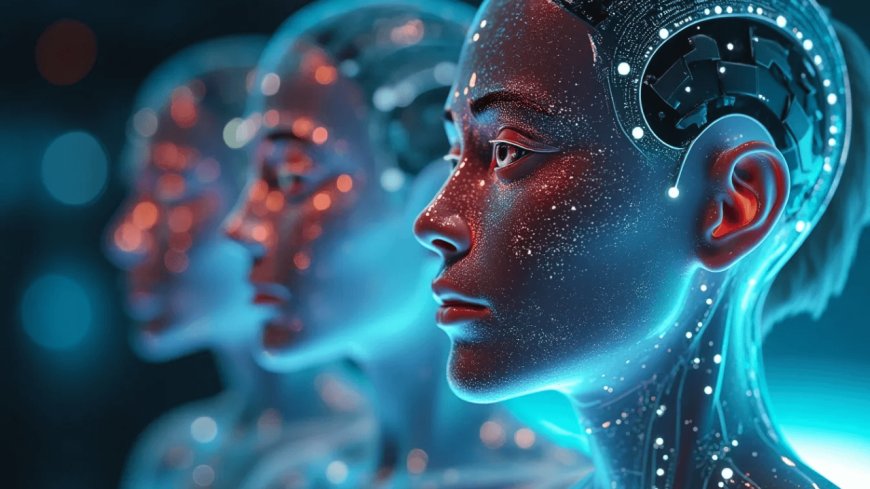Inside the Digital Twin Revolution: How Virtual Clones Are Redefining the Future of Industry
Discover how digital twins—real-time virtual replicas of physical systems—are transforming industries from manufacturing to healthcare and smart cities.

The Rise of Digital Twins: How Virtual Clones Are Transforming Industries
In an age driven by data and innovation, digital twins are quickly emerging as one of the most transformative technologies across multiple sectors. From aerospace to healthcare, manufacturing to smart cities, digital twins are no longer a futuristic concept—they’re a present-day force reshaping how industries operate, optimize, and evolve.
What Exactly Are Digital Twins?
A digital twin is a real-time virtual representation of a physical object, process, or system. It uses data from sensors, AI, machine learning, and IoT (Internet of Things) to simulate, monitor, and predict outcomes. Unlike simple 3D models or static simulations, digital twins are dynamic—they learn, adapt, and interact with their physical counterparts in real time.
The Origin and Evolution of Digital Twins
The concept dates back to NASA's use of simulators during the Apollo missions. However, it wasn’t until IoT and cloud computing matured that digital twins became commercially viable. Today, with advances in edge computing, real-time analytics, and AI, the digital twin market is booming. According to a report by MarketsandMarkets, the global digital twin market is expected to grow from $10.1 billion in 2023 to over $110 billion by 2030.
Industry-Specific Applications: From Blueprint to Breakthrough
1. Manufacturing: Predictive Maintenance and Efficiency
In smart factories, digital twins are helping manufacturers simulate production lines, monitor machinery health, and forecast failures before they happen. GE, Siemens, and Bosch are already leveraging digital twins to enhance asset performance and reduce downtime.
Real-world impact: A German automotive plant reduced unplanned downtime by 40% by using digital twins to simulate stress testing on equipment.
2. Healthcare: Personalized Medicine and Virtual Surgery
In healthcare, digital twins of organs or entire human bodies are being developed to simulate treatment outcomes. Hospitals are using patient-specific data to tailor treatment plans, and surgeons can rehearse complex procedures virtually.
For instance, the University Hospital of Heidelberg in Germany is using heart digital twins to better understand cardiovascular conditions and predict surgical results.
3. Urban Planning and Smart Cities
Cities like Singapore and Shanghai are building digital twins to optimize urban planning, traffic flow, and energy use. By simulating scenarios like infrastructure stress or emergency evacuation, municipalities can plan more resilient cities.
4. Aerospace and Defense
NASA and Boeing use digital twins to monitor aircraft health and conduct virtual tests. A digital twin of an aircraft can predict wear and tear, recommend maintenance, and even simulate emergency scenarios to improve design and safety.
5. Energy and Utilities
Energy firms are creating digital models of power grids, wind turbines, and oil rigs to optimize energy flow and detect faults. Shell uses digital twins to manage complex offshore oil platforms, reducing human risk and operational costs.
How Digital Twins Work: A Layered Approach
The core of a digital twin system includes:
-
Sensors and IoT Devices: Collect real-time data from the physical object.
-
Data Integration Platforms: Consolidate and process data from multiple sources.
-
AI and Machine Learning: Analyze data patterns, forecast future behavior, and recommend actions.
-
Simulation Software: Visualize and interact with the digital replica.
Benefits of Digital Twins: Why Industries Are Adopting Fast
-
Operational Efficiency – Improve processes and reduce costs.
-
Predictive Maintenance – Prevent breakdowns and reduce downtime.
-
Informed Decision-Making – Simulate "what if" scenarios to guide strategic planning.
-
Customer Personalization – Customize products and services using behavioral data.
-
Sustainability – Optimize energy use and reduce waste.
Challenges to Consider
While promising, digital twins come with challenges:
-
Data Privacy and Security: With vast data collection, cybersecurity is critical.
-
High Implementation Cost: Small businesses may struggle with initial investment.
-
Integration Complexity: Requires coordination between legacy systems and modern tech.
What’s Next? The Future of Digital Twins
As AI becomes more intelligent and quantum computing enters the mainstream, digital twins could evolve into autonomous decision-making systems. Imagine buildings that heal themselves, cars that continuously reprogram their performance based on road conditions, or personalized medical twins monitoring your health 24/7.
The convergence of 5G, edge computing, and metaverse technologies may further blur the lines between virtual and physical worlds. Experts predict that eventually, everything that exists physically will have a living digital counterpart, updated in real time.
Final Thoughts
Digital twins are no longer a luxury for tech giants—they’re fast becoming a necessity for any forward-thinking organization. By providing a bridge between the physical and digital realms, they’re enabling smarter decisions, deeper insights, and unprecedented agility.
If you're not already exploring digital twins in your sector, it’s time to take notice—your competitors probably are.
What's Your Reaction?
 Like
0
Like
0
 Dislike
0
Dislike
0
 Love
0
Love
0
 Funny
0
Funny
0
 Angry
0
Angry
0
 Sad
0
Sad
0
 Wow
0
Wow
0



















































